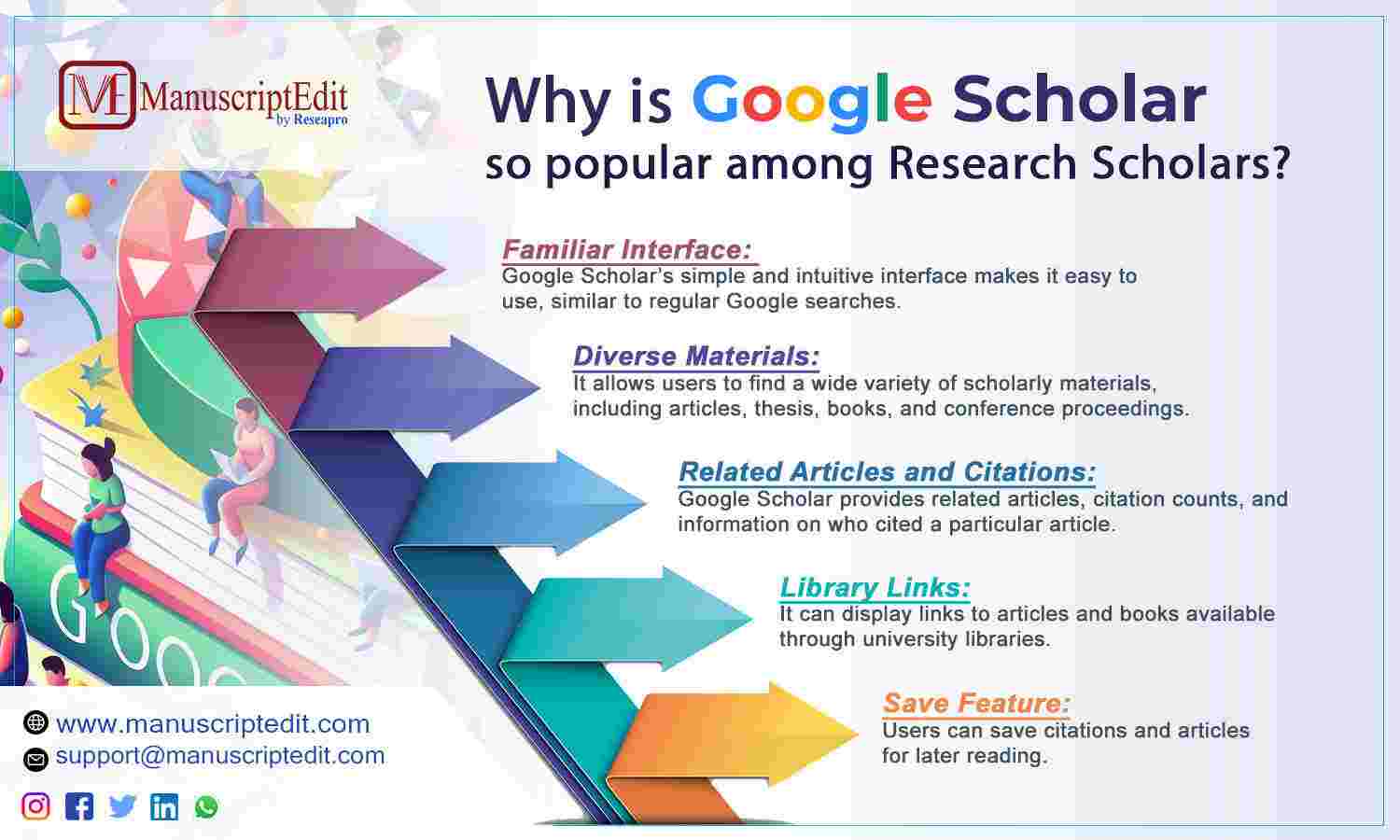 Google Scholar is a search engine for academic literature, offering many scholarly publications. To help researchers showcase their work and further their careers, this blog explores the value of Google Scholar citations for researchers by examining how they quantify research impact, promote collaboration, and improve academic reputation.
Google Scholar is a search engine for academic literature, offering many scholarly publications. To help researchers showcase their work and further their careers, this blog explores the value of Google Scholar citations for researchers by examining how they quantify research impact, promote collaboration, and improve academic reputation.
What Are Google Scholar Citations?
Google Scholar Citations are one way to gauge a research paper’s influence. They are determined by tracking how frequently a particular paper is cited in other academic works.
Citations are distinct from references in that the former are the sources acknowledged inside a publication, while the latter is how other writers acknowledge a work.
What Are the Benefits of Google Scholar Citations?
Tracking research effect and influence, finding pertinent research and collaborators, building academic reputation and credibility, and influencing funding and tenure decisions are just a few advantages of using Google Scholar citations.
Google Scholar indexes full-text journal articles, technical reports, preprints, theses, books, and other publications and lets users search for digital or hard versions of articles online or in libraries.

Why Are Google Scholar Citations Important for Researchers?
Researchers should value Google Scholar citations because they can gauge their work’s effect and influence, find relevant studies and collaborators, build academic credibility, and influence choices about financing and tenure.
Maintaining a record of citations aids scholars in staying current, participating in the broader academic discourse, and locating possible partners.
How Do You Boost Your Google Scholar Citations?
Make your study more visible and accessible if you want to increase the number of citations it receives from Google Scholar. Ensure Google Scholar correctly indexes your papers by setting up a profile and confirming your authorship.
To reach a wider audience, collaborate with other scholars, present at conferences, and post your work on academic networks. Ensure your articles are optimized with pertinent keywords, and consider publishing them in an open-access manner to boost your chances of being mentioned.
How Do I Maximize Google Scholar?
Google Scholar citations and maximize your impact by creating a thorough and current profile, confirming your authorship and ensuring your citation counts are correct. Add co-authors and claim and merge duplicate profiles to improve the visibility of your collaboration.
Update your publication list frequently and use keywords and abstracts to improve discoverability. Use Google Scholar’s citation monitoring and alerts to keep tabs on relevant research and track the influence of your work.
Conclusion
To sum up, Google Scholar citations are an essential indicator for academics that show the reputation, impact, and influence of their work. Citations are necessary, but so are careful use and interpretation.
Scholars should prioritize quality over quantity, consider the context of citations, and refrain from manipulation. You can use citations to promote academic integrity and quality by doing this.
References
https://unimelb.libguides.com/researcher_profiles/googlescholar#:~:text=Considerations%20and%20Risks-,What%20is%20Google%20Scholar%20Citations%3F,automatically%20or%20update%20them%20yourself.
https://libguides.tulane.edu/citation_tools/google_scholar
Header Title image: Exploring the Importance of Google Scholar Citations for Researchers
Image briefing:
1. Background Image:
- A clean and modern academic setting, such as a well-organized study desk with a laptop open to Google Scholar, stacks of research papers, and a few open books.
- Alternatively, a visual representation of a researcher’s digital workspace with charts and graphs depicting citation metrics.
- Main Visual Elements:
- A prominent Google Scholar logo, either in the center or subtly integrated into the background.
- Icons or graphics representing various aspects of citations, such as upward-trending graphs, citation marks (quotation marks), or a cluster of books and academic journals.
- Title Text:
- Place the title “Exploring the Importance of Google Scholar Citations for Researchers” prominently across the top or center of the image.
- Use a professional and modern font, with a color that contrasts well with the background for readability (e.g., white text on a dark background or vice versa).
- Supporting Text:
- Include a brief tagline or subtitle under the main title, such as “Enhance your academic impact and visibility with effective citation management.”
- Use a slightly smaller font size for the supporting text to distinguish it from the main title.
- Visual Cues:
- Incorporate subtle arrows or lines pointing to different elements within the image, guiding the viewer’s eye from the title to key aspects like the Google Scholar logo and citation metrics.
- Use icons representing citation metrics, such as a citation graph or a list of citations, to visually emphasize the topic.
- Color Scheme:
- Use a color palette that aligns with academic and professional themes, such as blues, grays, and whites, ensuring a clean and trustworthy look.
- Ensure the colors used for text and icons stand out against the background for maximum readability.
- Branding Elements:
- Include a small, unobtrusive ManuscriptEdit logo or watermark in one of the corners to subtly brand the image without distracting from the main content.
- Ensure the branding aligns with the overall aesthetic and color scheme of the image.
- Call-to-Action (Optional):
- If space allows, add a small call-to-action at the bottom of the image, such as “Learn more in our latest blog post!” with an arrow or icon indicating further engagement.
Image References:
https://www.greyb.com/wp-content/uploads/2018/04/featured-images-1.png
https://libapps-ca.s3.amazonaws.com/accounts/142800/images/Google_Scholar_Profile.png
!Google Scholar Infographic
reference image: https://img.freepik.com/premium-vector/risk-management-infographic_23-2148607942.jpg?w=826
- Familiar Interface: Google Scholar’s simple and intuitive design makes it easy to use, similar to regular Google searches.
- Diverse Materials: It allows users to find a wide variety of scholarly materials, including articles, theses, books, and conference proceedings.
- Related Articles and Citations: Google Scholar provides related articles, citation counts, and information on who cited a particular article.
- Library Links: It can display links to articles and books available through university libraries.
- Save Feature: Users can save citations and articles for later reading.
Remember that Google Scholar is a powerful tool for researchers, offering both simplicity and depth in accessing scholarly literature12
Learn more
1scholar.google.com2scholar.google.com3drupal.org4scholar.google.com.ec
Exploring the Importance of Google Scholar Citations for Researchers Google Scholar Citations play a crucial role in the research community, providing a valuable platform for researchers to showcase their work and enhance their visibility. By accurately tracking citations, Google Scholar helps researchers measure the impact and reach of their publications, enabling them to establish their credibility and influence in their respective fields. Moreover, Google Scholar Citations also facilitate collaborations and networking opportunities among researchers with similar research interests, fostering a dynamic and interconnected scholarly community. Don’t miss out on the benefits that Google Scholar Citations can offer to elevate your research profile.



